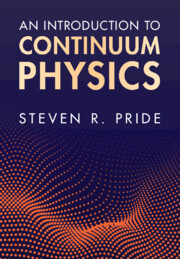10 - Fourier Analysis
from Part II - Mathematical Methods
Published online by Cambridge University Press: 06 February 2025
Summary
The Fourier transform pair is derived and various conventions in its definition discussed. It is shown how to obtain forward and inverse Fourier transforms for specific functions, which results in the completeness relation being formally proven. The basic properties of the Fourier transform are derived which include the symmetry properties of the real and imaginary parts, the shifting property, the stretching property, the differentiation property, Parseval’s theorem, the convolution theorem, and the integral-moment relations. The Fourier transform pair is then used to derive the two most important theorems of probability theory: the central-limit theorem and the law of large numbers. The Fourier transform is then used to solve various initial-value problems involving the diffusion and wave equation. The chapter concludes with the way Fourier analysis is key to performing time-series analysis of recorded data, which includes both filtering of the data and topics related to the data being recorded at discrete time intervals.
Keywords
- Type
- Chapter
- Information
- An Introduction to Continuum Physics , pp. 519 - 569Publisher: Cambridge University PressPrint publication year: 2025

